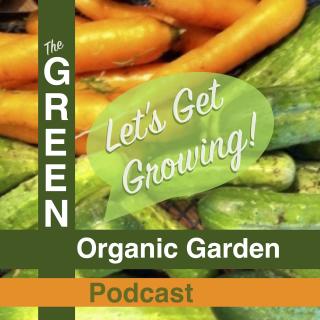
Gardening Starts in the Fall
Are you dreaming of harvesting your own juicy, homegrown tomatoes next summer? Tired of paying outrageous prices at the grocery store? Good news: fall is the best time to prepare your garden for success.If I’ve learned one thing about organic gardening, it’s this: healthy soil = healthy plants. And there’s no better season than autumn to build a strong foundation for next year’s harvest.Start Composting in the FallFall leaves are gardening gold! Instead of sending them to the landfill, add them to your compost pile. Mix dry leaves with kitchen scraps—like eggshells, coffee grounds, and banana peels—and you’ll have rich compost by spring.Healthy compost improves soil structure, boosts nutrients, and helps your garden retain moisture during summer heat. If you don’t already have a compost bin, fall is the perfect time to start one.Build New Garden Beds Before SpringLooking to expand your garden? Fall is the ideal season to create new growing spaces. You’ll avoid the spring rush and be ready to plant as soon as the soil warms.Whether you’re dreaming of a kitchen garden, raspberry patch, pollinator border, or raised beds for leafy greens, gather your materials now. Supplies sell out quickly in spring—and often cost more.Tip: Raised beds need a lot of soil. Start sourcing or making it now so you’re not scrambling in April.Do a Fall Seed InventorySeeds are often sold out by spring, so use fall to get organized. Go through your stash, toss old or expired packets, and make a list of what you’ll need for next year.Ordering early ensures you get the varieties you want—and avoids that dreaded “out of stock” label when planting season arrives.How to Save Tomato Seeds One of the easiest fall gardening tasks is seed saving. Just one ripe tomato can provide enough seeds to grow a whole bed next year.Here’s how to do it:Scoop out seeds from a ripe tomato.Rinse and ferment them for a few days (to remove the gel coating).Dry thoroughly and store in a labeled envelope.Plant Cool-Weather Crops in FallWant an early spring harvest? Try sowing spinach or lettuce in fall. These hardy greens can overwinter and sprout as soon as the snow melts—giving you fresh greens weeks before summer crops take off.Most experts recommend planting by mid-August, but don’t be afraid to experiment. Weather patterns are shifting—this year we had 100° days in September with no frost by the end of the month! I’ll be sprinkling spinach seeds anyway to see what happens. Gardening rewards curiosity.You can also save seeds from lettuce—just let a few plants bolt and go to seed. You’ll collect plenty for next year while feeding birds and beneficial insects in the fall. Here’s a great blog post from Megan Cain at the Creative Vegetable Gardener I think you’ll love!Revisit Your Garden Goals Fall isn’t just about cleanup—it’s a season for dreaming and planning. Take time to reflect on your garden goals and put one into action before winter sets in. Compost, build beds, save seeds, or plant fall crops—whatever you choose, your future self will thank you.Question for you: What garden goal are you starting this fall? Share it in the comments!This podcast uses the following third-party services for analysis: Spotify Ad Analytics - https://www.spotify.com/us/legal/ad-analytics-privacy-policy/
26 Okt 12min

Talking Tomatoes
The shortest episode ever probably but a couple of good tips about tomatoes.This podcast uses the following third-party services for analysis: Spotify Ad Analytics - https://www.spotify.com/us/legal/ad-analytics-privacy-policy/
26 Okt 4min

430. My 2025 Compost bin
Nutmeg helps us lay out all the parts and piecesI got this Vivosun Compost bin off of Amazon for a bit of a cost of $150.00 but it's so worth it to see my mom have an easy place to throw her scraps and leaves and make that good rich soil for her new kitchen garden vegetable bed.I'm also going to include the link to my favorite pitchfork from AM Leonard.Please remember when you put food waste in the landfill it doesn't decompose the way it does in a compost pile. In a landfill, it is compacted in a closed environment and releases methane gas into the atmosphere, in a compost pile food waste decomposes in an aerobic environment decreasing the release of harmful green house gases. So even if you aren't a gardener it's important to keep your food waste out of the landfill. Can you recycle your neighbors scraps or find someone to donate your scraps to? In San Francisco make it mandetory residents and businesses collect the scraps for a municipal compost pile.I filled up two giant garbage bags of leaves after I filled my mom's beds with about 8 birdseed bags full of leaves and grass clippings that had been in her bin.The hugleculture method was the exactly what I needed to fill my mom's bed with soil.I actually dug all of this dirt out, rebuilt the sides, put the broken limbs in, smothered them with leaves, and then dug out my mom's dirt beneath the compost bin in order to fill this bed. But boy oh boy did it grow.Stain recommended by Nicole Burke from Gardenary.The Stain I bought from amazon.This podcast uses the following third-party services for analysis: Spotify Ad Analytics -...
7 Sep 12min

429. Five Reasons You Should Build A Kitchen Garden
People often ask me, “What is a kitchen garden?” What it is not is a garden in your kitchen. It’s not a tower full of lettuce growing in water next to your microwave or a pot of herbs on your windowsill. The answer is actually quite simple: a kitchen garden is essentially a bed of fruits, vegetables, and herbs you like to use for cooking, located near your kitchen. Convenience is one of the biggest keys to successful gardening. One ~ A kitchen garden is easier to care for if it’s located just outside your kitchen door, where you do your cooking. This might not always be possible, depending on your garden's position in the sun, but the closer you can get to accessing your main cooking area, the better. Two ~ A kitchen garden is easier to harvest from, making it more likely you will eat those vegetables you took so much time to grow. And they’ll thrive the more time you spend in your beds harvesting and caring for your little seedlings. Three ~ A kitchen garden that uses deep beds will also make your veggies grow stronger. This is because the roots can go deeper, water can circulate around them more fluently, and they can soak up all the nutrients they need. Additionally, the best soil possible is included. Four ~ A kitchen garden is easier to water. A kitchen usually has a water supply, so even if you don’t have a hose that will reach, filling a watering can from the sink will keep those baby seedlings moist when they are first germinating, one of the struggles of growing plants from seed.Five ~ A kitchen garden can contain a compost pipe, also known as a worm tube (just a piece of perforated 6” or bigger PVC pipe), making recycling your kitchen scraps easier than you’ve ever believed, while providing fresh nutrients to your garden all season long. To keep animals out, just cover with a plate or an upside-down clay pot bottom. Drop leftover food scraps, coffee grounds, egg shells, and even weeds down the tube. Worms will then turn these bits of waste into nutritious food for your soil and plants. You want your pipe to be about 21/2 feet long with the lower 18 inches buried into the soil. Last spring, my husband finally made my kitchen garden dreams come true, and this year I built one for my mom in her garden. We planted companion plants like basil and tomatoes, cucumbers and peppers, and sunflowers along the back of the bed near the garage to attract beneficial insects. We added nasturtiums, which not only add a peppery flavor and pretty color to summer salads but also serve as a natural deterrent to pests with their strong odor. An old trellis I found made an excellent climbing post for pole beans, something I can’t plant in our frosty Montana beds — and some lettuce, arugula, and radishes to pick first in the early spring. Despite my mom's repeated assurances that she could never get eggplants to grow, a couple of Black Beauties, did a great job producing a few delicious purple aubergines, one of her favorite vegetables to cook. Each corner grew a big squash, and I could only dream about my mom’s famous flower fritters that were a delicacy when we were kids. As we head into fall, it's a great time to design and build a kitchen garden for next spring and get started collecting those compost scraps, creating lots of healthy soil to fill those beds with.This podcast uses the following third-party services for analysis: Spotify Ad Analytics - https://www.spotify.com/us/legal/ad-analytics-privacy-policy/
5 Sep 12min

428. 5 Lessons I Learned Building a Kitchen Garden For My Mom this Spring •
The Hempstead Home Depot Garden Center Team Lesson #1: Measure First. My original plans for my mom’s bed was to build it 8’x4’ using four two-by-sixes cut in half and eight full-size. Before the associate at Home Depot made the first cut, I wondered how I'd fit an 8-foot board in my mom’s car. So, we ended up taking a couple of 2’x 6’x 12’ boards and cutting them into two 6-foot chunks and four 3-foot chunks each. But even this was too big in the end for the space I had picked out. A 5’x 2’ bed would have been best for her particular spot. If it were my house, I’d move the flowers and bushes to make room for the bigger bed, not the other way around. However, my mom hadn’t tasted the homegrown veggies we were going to grow yet. She was still not entirely sold on the value of a deep bed or growing your own, as she thought the farmers' market was convenient enough. [caption id="attachment_140350" align="aligncenter" width="768"] In this photo you can see how my brother drilled a couple of boards for extra support to sit on top of.[/caption] #2: Level ~ level ~ level I ended up pulling this bed apart and putting it back together, not one, not two, not three, but four times before I could plant it, because I didn’t take the time to level the bed properly in the first place. #3: Obtaining soil I can’t tell you how many people I have talked to about the first step to building a garden starts way before you are ready to plant, but with saving scraps and building a compost bin to create your own healthy soil. Deciding where to locate your soil and planning for extra soil when needed is essential. Someone had told me I could get soil at the local dump, but when I headed over with my garbage can, shovel, and some pots,...
3 Sep 15min

429. Five Reasons You Should Build A Kitchen Garden
Five Reasons You Should Build A Kitchen Garden People often ask me, “What is a kitchen garden?” What it is not is a garden in your kitchen. It’s not a tower full of lettuce growing in water next to your microwave or a pot of herbs on your windowsill. The answer is actually quite simple: a kitchen garden is essentially a bed of fruits, vegetables, and herbs you like to use for cooking, located near your kitchen. Convenience is one of the biggest keys to successful gardening. One ~ A kitchen garden is easier to care for if it’s located just outside your kitchen door, where you do your cooking. This might not always be possible, depending on your garden's position in the sun, but the closer you can get to accessing your main cooking area, the better. <div...
3 Sep 12min

427. Cultivating Connections | Homestead Organics | Laura Garber | Hamilton, MT
True Leaf Market is offering a discount code for listeners to get 15% off cover crop seeds: GOG15. (See disclosures below)https://www.cultivatingconnectionsmt.org/about-us-1Where the food is the by-product and the product is the relationship and learning that students get from working on the farm and growing lettuce and you get to eat the lettuce that is grown. So cultivating connections is basically the farm classroom and people can be on the farm and interact with animals through a seasonal way. Salads for SeniorsHigh schoolers who are hired as interns to learn how to be engaged in the kitchen by growing the lettuce, harvesting it, bringing it into the kitchen to clean it, make the salads that are delivered to meals on wheels.Funding? Tricky for non-profits. If Laura had her way there would be non-profits, for profits and community profits. Now they raise money through grants, weekly CSA shares, and other fundraising projects. CSA shares support upcoming farmers. $500 goes to help create a future for everyone.Where do high schoolers come from? Local or are there places to stay?Youth farm internships are focused on local high schoolers. Also have adult interns who come from all over and stay on farm but wanted to focus more on local students.First garden experience. Grew up outside of Butte?Remembers a 2nd grade classmate brought a queen bee and was fascinated with rural life. Mom had a small garden full of tomatoes and raspberries. First thing remembered planting was pine trees around her house in town. Went to UMT and was in first year of PEAS program.Next summer started managing one of the community gardens and that was her first foray into growing 10 zucchinis instead of 1 and first experience into working with youth. Took 10 plots to grow for Food Bank. How to engage young people in a way that is meaningful for everyone.Do you want to tell us about social presencing theater and what's social presencing soil?Ways to engage people. The presencing institute was created by Arawana Hayashi.What grew well this year?Community - food and farming are the universal connector. At the farmer's market two people who would usually never talk to each other standing talking about spinach and how they prepared it last week. What literally grew well last year was the kale. Grows well in all kinds of weather. So good for you. Hope people can grow kale. Also a good community builder and people have their assumptions about kale and so they get people talking to each other.JackieMarie - 2 things, I got to go to the Missoula market, 2xs last year and it was so peaceful talking to the vendors, standing in line getting coffee, exactly talking talking to compost guy and the pepper guy and the vendors so smiling.2nd - my kale was awful last year. I actually put row cover and forgot 2xs and it was worse than ever. Kale is a really good indicator species for us. We had tons of aphids last year and the year before. Kale is a really good indicator of stress in the environment. Row cover is a great way to protect it. A great way to stay ahead of kale is to have multiple crops. Maybe every 3 weeks planting kale in different places. For a family of 4 you could get buy with just 4 plants. If you can transplant a few plants in April and then late May, and June. Pull the bugs off the ones that are infested. Also if you can enjoy on off season. Plant in late summer. 5 leaf stage
19 Sep 202256min

426. Bluebird Gardens | CHARLOTTE EKKER WIGGINS | Missouri
Tuesday • March 15, 2022Here from Missouri is an amazing beekeeper, gardener, and author, CHARLOTTE EKKER WIGGINS!Bee Club Basics: How to Start a Bee ClubA Beekeeper's Diary: Self Guide to Keeping BeesHas lots of checklists to help you get started.Master Beekeeper class is using her next book Bees Need Flowers, Planting for Pollinators coming out soon.Tips include:reading a lot. Join a bee club because it's like learning a new language.Beekeeping is very localNeed to know bee biology to work with bees not tell them what to doSpend a year learning about beekeeping by taking 1 or more classes, reading, meeting other beekeepers.Bees are colony based, not self centered like humans. Bees sometimes leave because they don't want to spread disease to the hive.Jackie asks what if you can't find a club? Thanks to the pandemic lots of clubs are meeting on Zoom like Bees Beyond Borders in Florida have guest speakers from leading bee experts in the country.What works and what doesn't in a gardenThe critical part of providing bees is your SOIL HAS TO BE HEALTHY!Need to keep soil healthy which will keep plants healthy and then bees will be healthy and food we eat will be healthy.One out of every 3 bites of food we eat is from bee pollination.Composting is the easiest thing to do.Mulch with compost.Lots of bird houses for natural pest controlI'm the same way. There's so many garden chores I don't want to do but compost is so easy! I don't understand people who say it's too hard, messy or complicated.Charlotte adds we need to move away from perfection. In the old days, magazines used to really focus on green lawns. Common sense says it's expensive to put in, you need to put in high expensive fertilizers, the minute it grows you cut it down and it doesn't really add anything to the environment.A bug bite on a rose leaf is exciting it means there's a relationship between ladybugs and praying mantis etc who are eating the pests in the garden because they need food so a whole in a leaf is important for the rose to grow.What grew well? CatnipWhat's something new or different your excited to try?Some Baker Creek Co Seeds.https://www.rareseeds.com/Some flowers and peppers that were ordered.I like the tried and true. Do you save your own seeds?I just tried spaghetti squash and loved it so I saved those. I also do companion planting. I plant onions around my roses to deter bugs and if I need an onion. I mix my vegetables and flowers, I don't have them in rows, I plant them in with my flowers because I can move them around each year so they're not planted in the same soil and using up all the nutrients and the pollinators are attracted by the flowers. How about something that didn't go the way you thought is was going to?My least favorite thing is to dig holes, I didn't get as much mulch as I would have liked in some new flower beds, and I planted...
8 Sep 202258min





















